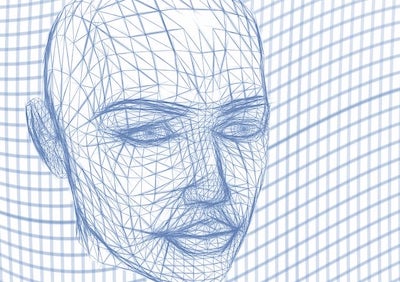
Three Ways AI-Powered Digital Twins Can Improve Government Services

Guest Blogger: Dr. William Brantley, Professor, Project Management Center of Excellence, University of Maryland and Lecturer, Department of Communication, University of Louisville
"A digital twin is a virtual representation of an object or system that spans its lifecycle, is updated from real-time data, and uses simulation, machine learning and reasoning to help decision making." Digital twins are most used in simulating equipment such as wind turbines. Digital twins can also simulate entities such as buildings or even cities. Digital twins of people are employed in medicine to mimic the effects of treatment or surgery.
Digital twins are used in private industry to predict the effects of proposed decisions. Digital twin technology is sophisticated enough to collect accurate and timely information to make better decisions and take evidence-based actions. A digital twin is a time machine that lets decision-makers view different outcomes of their choices to determine the most optimal action.
The following are three ways digital twin technology can aid governments in delivering better outcomes.
Crystal agencies – a digital twin of an agency allows leaders to zoom in on any part of the agency's information flow or processes. Leaders can see where process bottlenecks are or suggest ways of optimizing information and resource flows. The agency's digital twin data can come from accounting systems, personnel systems, and other information collected from management systems. I call the digital twins of government agencies crystal agencies because the agency's operations are fully transparent to citizens and decision-makers.
Augmented public servants – imagine how much more efficient and productive agency employees will be when they have access to all the information and processes of the agency. Much of a knowledge worker's time is spent finding and preparing data. Using artificial intelligence (AI) in the agency's digital twin, knowledge workers can eliminate the time-wasting data preparation work to give more time to data analysis and utilization.
In addition, public servants can create a digital twin trained on the public servant's knowledge and expertise that can interact with citizens and fellow employees. There are currently services where you can make an AI version of yourself to answer questions and coach people.
Citizen digital twins – what if citizens had digital twins? Public sector leaders can simulate changes in government service delivery to determine the best way to serve the public and better meet the needs of individual citizens – the mass personalization of government services. For example, the Veteran's Administration can create digital twins of veterans to predict future health conditions and provide just-in-time preventative care.
Another example is the digital twin of a local economy. When I worked as an environmental paralegal for the Kentucky Environmental Protection Cabinet in the early 1990s, I was on a project to simulate how proposed environmental regulations would affect a small city's economic future. It took hours of manual calculations to build crude economic models. Imagine how today's AI and data analysis technology could create a more detailed economic model using real-time data to make accurate scenarios based on variations in environmental regulations.
When AI is paired with digital twin technology, you create a time machine where decision-makers can experiment with proposed solutions to maximize benefits and reduce costs before implementing the real-world solution. Digital twins can also free employees from time-consuming routine work, allowing for more creative and impactful efforts to serve citizens better.
How Can Governments Move Forward with Digital Twins?
Governments are already using digital twins to aid infrastructure planning. For example, Boston's Planning and Development Agency created a digital twin of Boston's landscape. Boston modified a real-world design based on how the digital twin affected the simulated landscape. Las Vegas uses digital twins to determine the best way to meet sustainability goals.
Other governments have paired artificial intelligence with digital twins' technologies to aid decision-making. Singapore's government has utilized digital twins to simulate the entire city. Combined with AI, this allows for optimizing traffic flow, planning new infrastructure, and foreseeing potential issues in the urban environment. In the United States, some states have used AI with digital twins to create a replica of the healthcare system, thereby allowing for analysis and optimization of healthcare delivery.
Governments can move forward in acquiring digital twin technologies by collaborating with technology providers and investing in necessary infrastructure. They can start by identifying key areas where digital twins can provide substantial benefits, such as urban planning or disaster management. Creating legal and regulatory frameworks to support the technology's implementation will be essential.
Governments must also coordinate their approaches to artificial intelligence to protect citizens' privacy and data rights. Pilot projects can be launched to test the concepts, followed by scaling up successful initiatives and ensuring ongoing training and support for the involved personnel. Governments can foster innovation and tailor technology to meet local needs by forming partnerships with academia and industry.
Bill Brantley is the President and Chief Learning Officer of BAS2A, an instructional design consultancy focused on state and local governments. He also teaches leadership communication and project management at the University of Louisville and the University of Maryland. You can reach him at https://www.linkedin.com/in/billbrantley.
Image by Gerd Altmann from Pixabay



